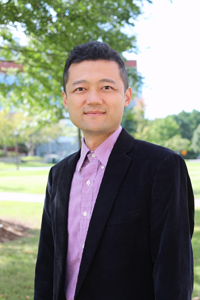Program Information
Fast Treatment Planning for Arc Therapy Using Maximum Intensity Regularized Quadratic Optimization (MIRQO)
T Niu*, L Zhu, Georgia Institute of Technology, Atlanta, GA
SU-E-T-647 Sunday 3:00PM - 6:00PM Room: Exhibit HallPurpose:
Arc therapy is an emerging technique to achieve effective and efficient dose delivery by rotating the gantry of Linac through one or more arcs with the radiation beam continuously on. Treatment planning in arc therapy is a difficult optimization problem mainly due to the non-convex physical constraints of deliverable apertures and a large amount of optimization variables. The stochastic searching scheme is initially introduced to minimize the non-convex objective and referred to as direct aperture optimization (DAO). However, the number of segments is pre-fixed in the DAO approaches, and the typical random search scheme in the optimization is computationally intensive. Beamlet-based optimization (BBO) is an alternative way for arc therapy planning and achieves high computation efficiency. This method fails to fully incorporate the physical constraints of arc therapy into planning process and has limited efficacy. In this work, a regularization-based algorithm is proposed to overcome the drawbacks of the BBO method.
Methods:
Instead of smoothing the beamlet intensity maps as in BBO, we include a maximum intensity constraint in the optimization objective to enforce the signal level consistency. An aperture rectification algorithm is then applied to generate single- or multi-arc deliverable apertures. The new scheme is referred to as the maximum intensity regularized quadratic optimization (MIRQO).
Results:
On a prostate and a head-and-neck patient, MIRQO successfully generates a fluence map with over 70% of non-zero intensities approaching the maximum value and readily rectifiable into single segment. The computation time of MIRQO is one order of magnitude less than that of DAO.
Conclusion:
MIRQO maintains an efficient form of quadratic optimization, with an additional advantage of approaching the non-convex constraints using convex approximation. By providing an efficient and effective planning scheme, our method is promising to explore the ultimate potential of arc therapy.
Contact Email:


